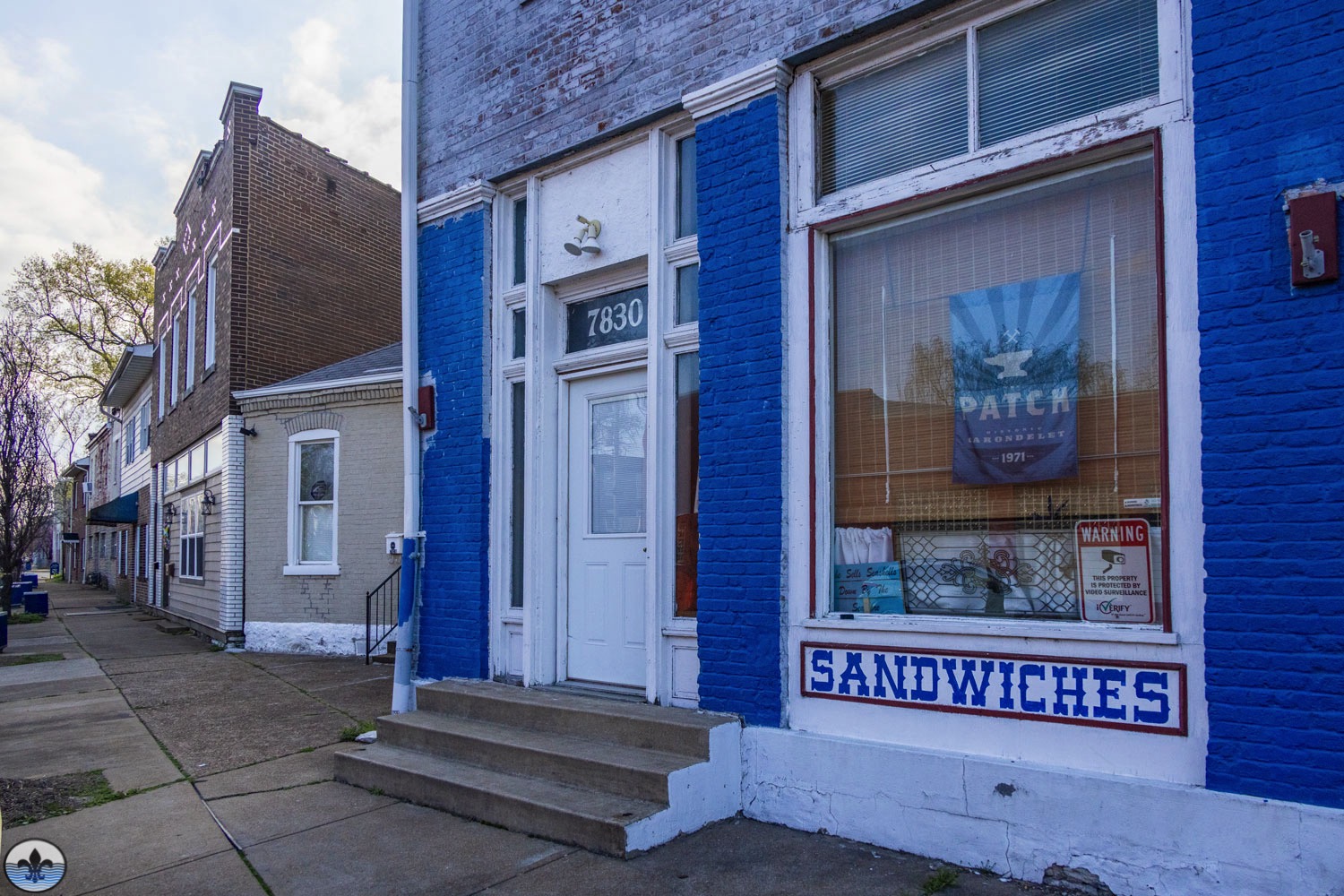
photo by Diana Linsley
In the very southern tip of the City of St. Louis, lays a neighborhood that many from the region either overlook or don’t even know exists. Unfortunate circumstances for a neighborhood that was central to so much river industry for many years, including St. Louis’ short-lived but significant shipbuilding era, and depending upon how you view it, the earliest European settlement site in Missouri. Welcome to The Patch.
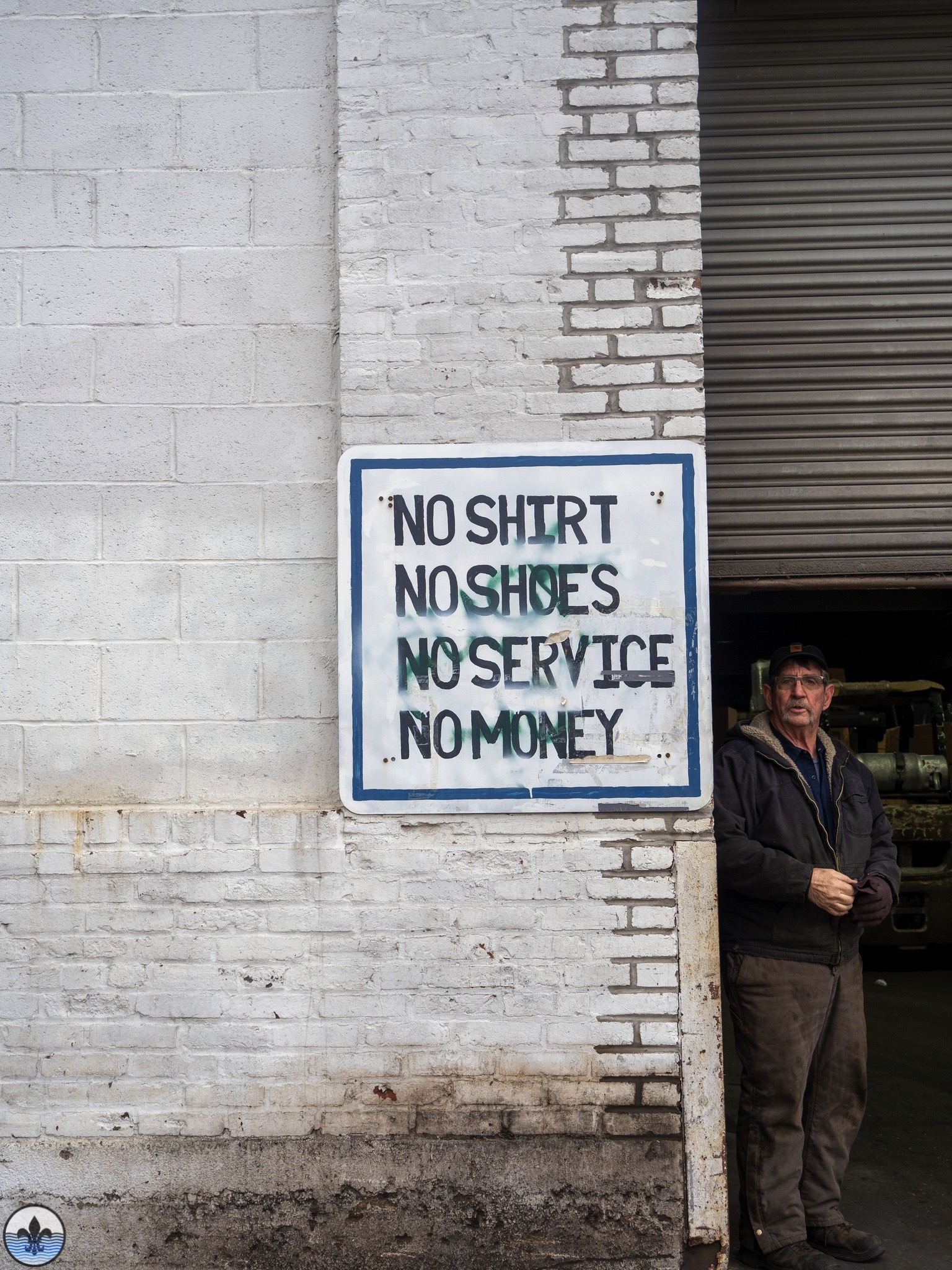
photo by Dennis Daugherty
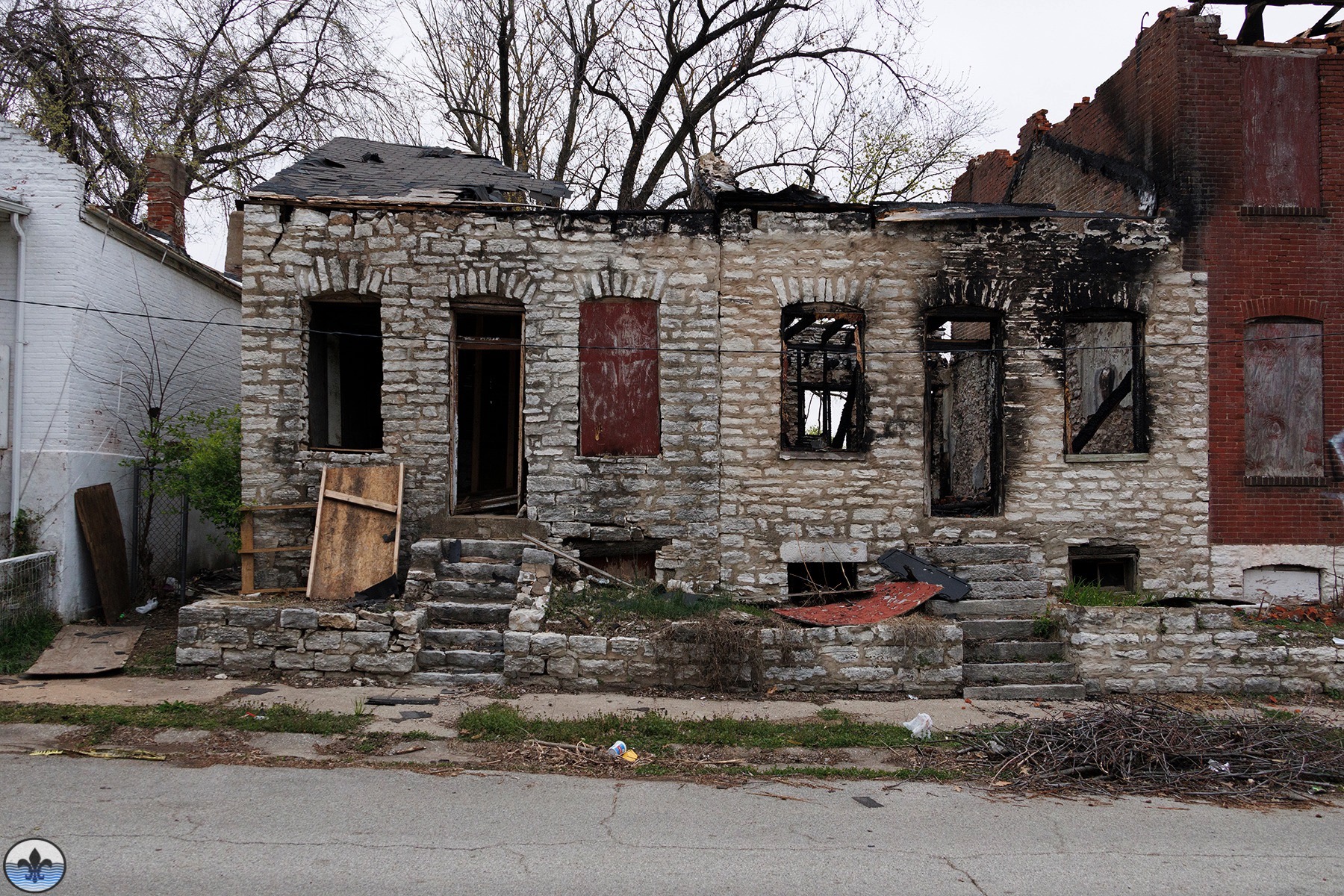
photo by Sue Rakers
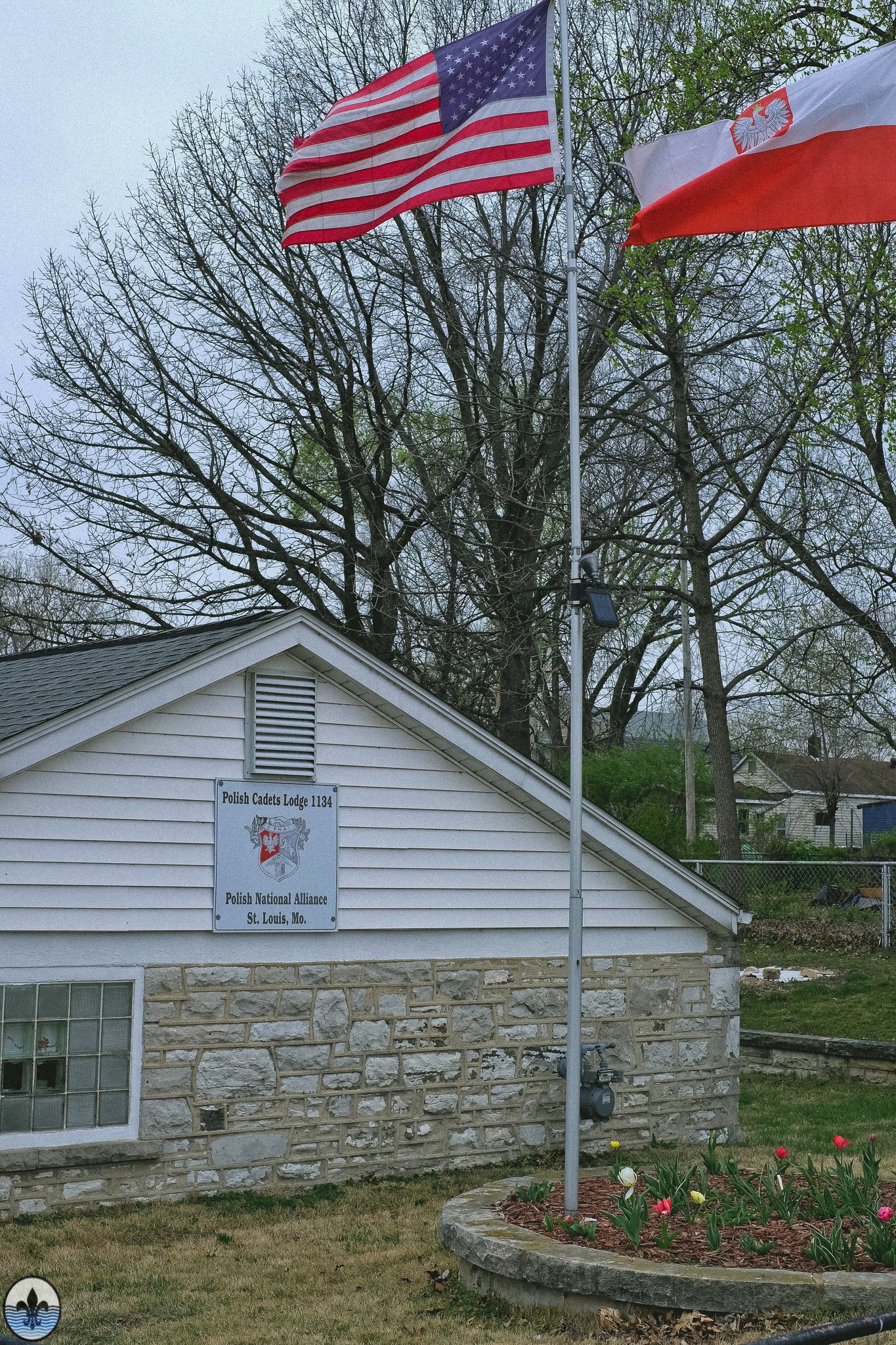
photo by James Palmour
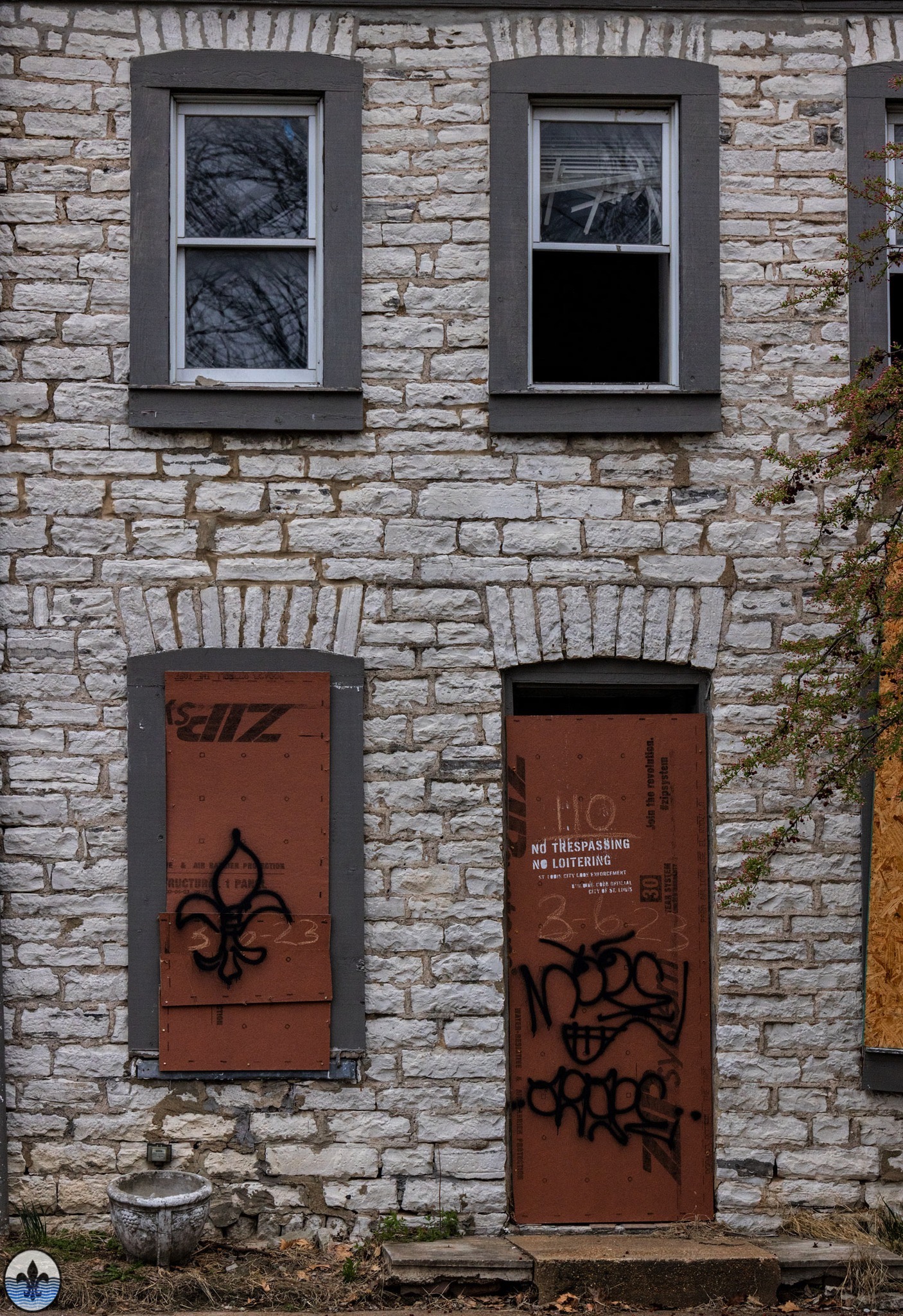
photo by Diana Linsley
On May 17, 1673, Louis Joliet, Jacques Marquette and a small surveying team departed French Quebec, intent on finding the elusive and mysterious “Great Water”, a vast river described to them by the Native Americans. Joliet’s background was in map-making and fur trading, and Marquette was a Jesuit missionary who understood several native languages. They returned in September of the same year, having found the Mississippi River and determined that a water passage was indeed possible from the upper midwest (and beyond) down to the Gulf of Mexico. The journey led them over 2500 miles, and was significant because it laid the groundwork for future French settlements, motivated by trade and by converting the native populations to Catholicism, along the Mississippi River.
Following Joliet’s and Marquette’s survey, the Jesuit Mission of St. Francis Xavier was established in 1699 at a site near the mouth of a river they named “Riviere des Peres” or “River of the Fathers”. Unfortunately, the settlement lasted only about three years due to Indian conflicts (the early French settlers often welcomed Native Americans into their communities, and in this case, their chosen allies were at war with other tribes nearby). In 1703, the settlement was moved further south and to the Illinois side of the Mississippi, where it was renamed Kaskaskia. Fortunately, this early settlement was not the last European community to form in Missouri, and in c.1735 Ste. Genevieve was founded by a branch of Kaskaskia’s settlers, while in 1764, Pierre Laclède and Auguste Chouteau, Jr.’s St. Louis originated just seven miles to the north. Carondelet (or “Louisbourg”, as it was originally called), which initially included the land for The Patch, was founded by Clement DeLore de Treget in 1767.
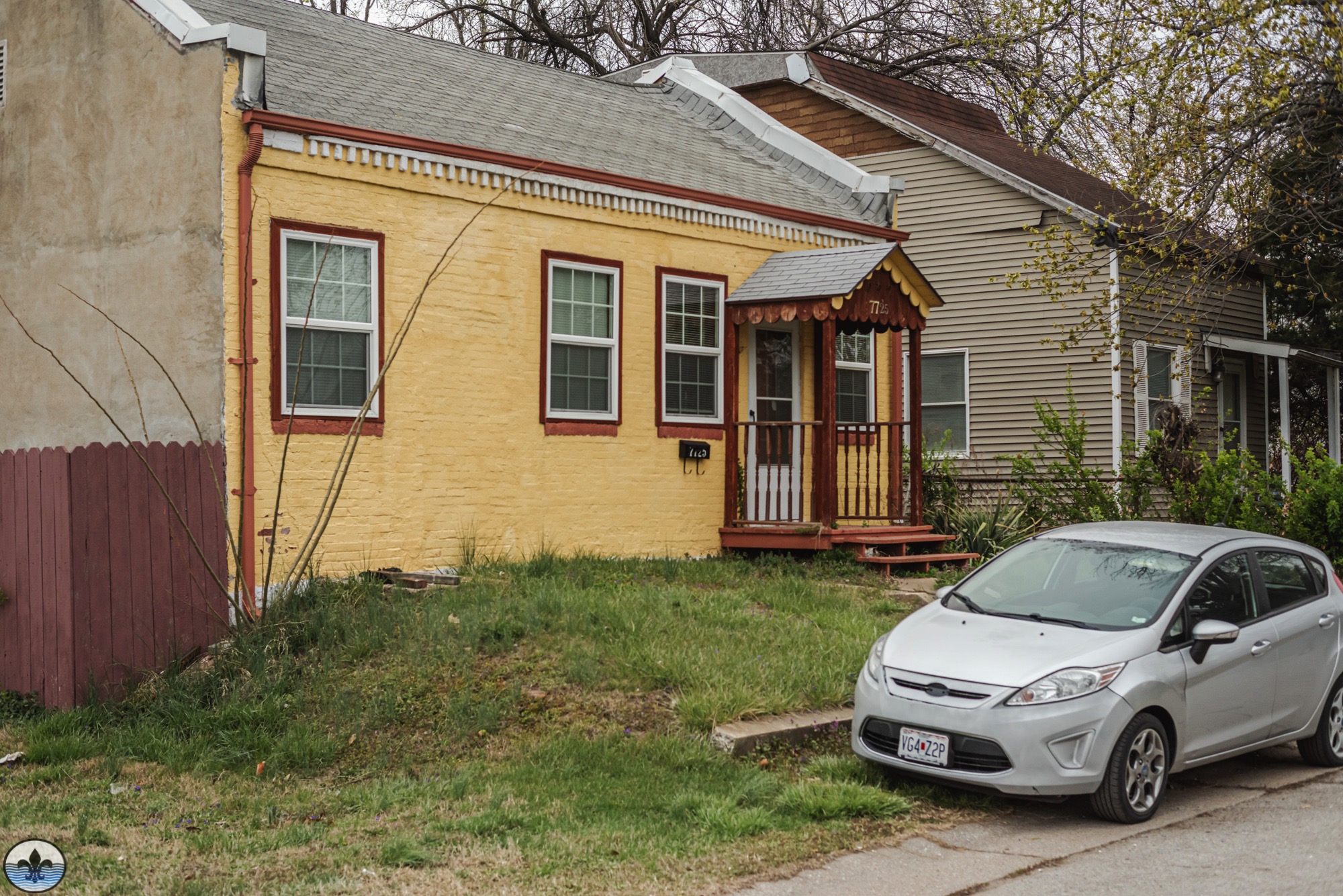
photo by RJ Wilner
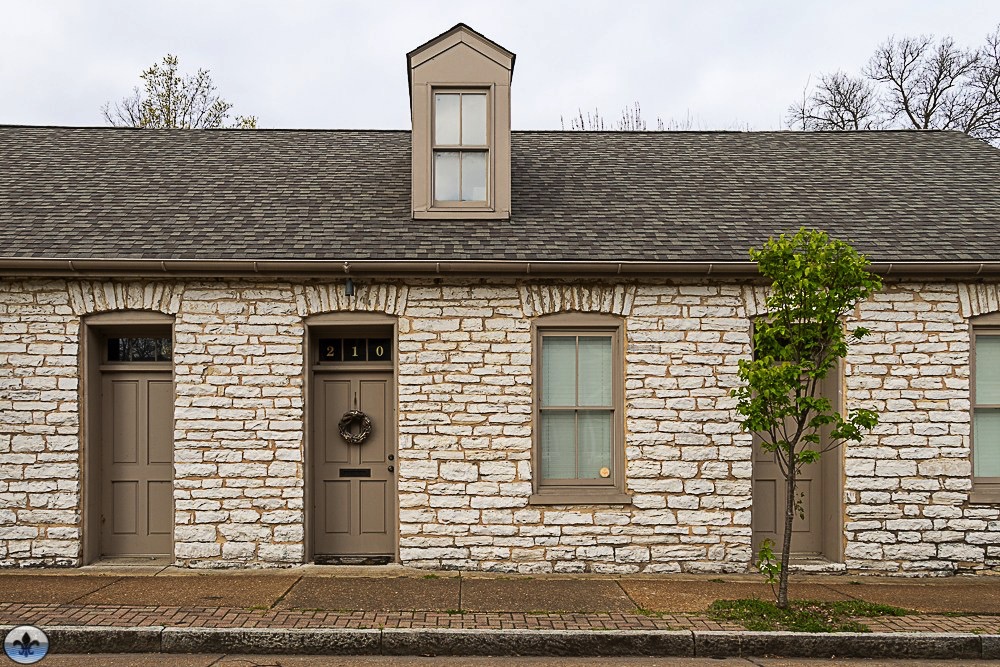
photo by Jane DiCampo
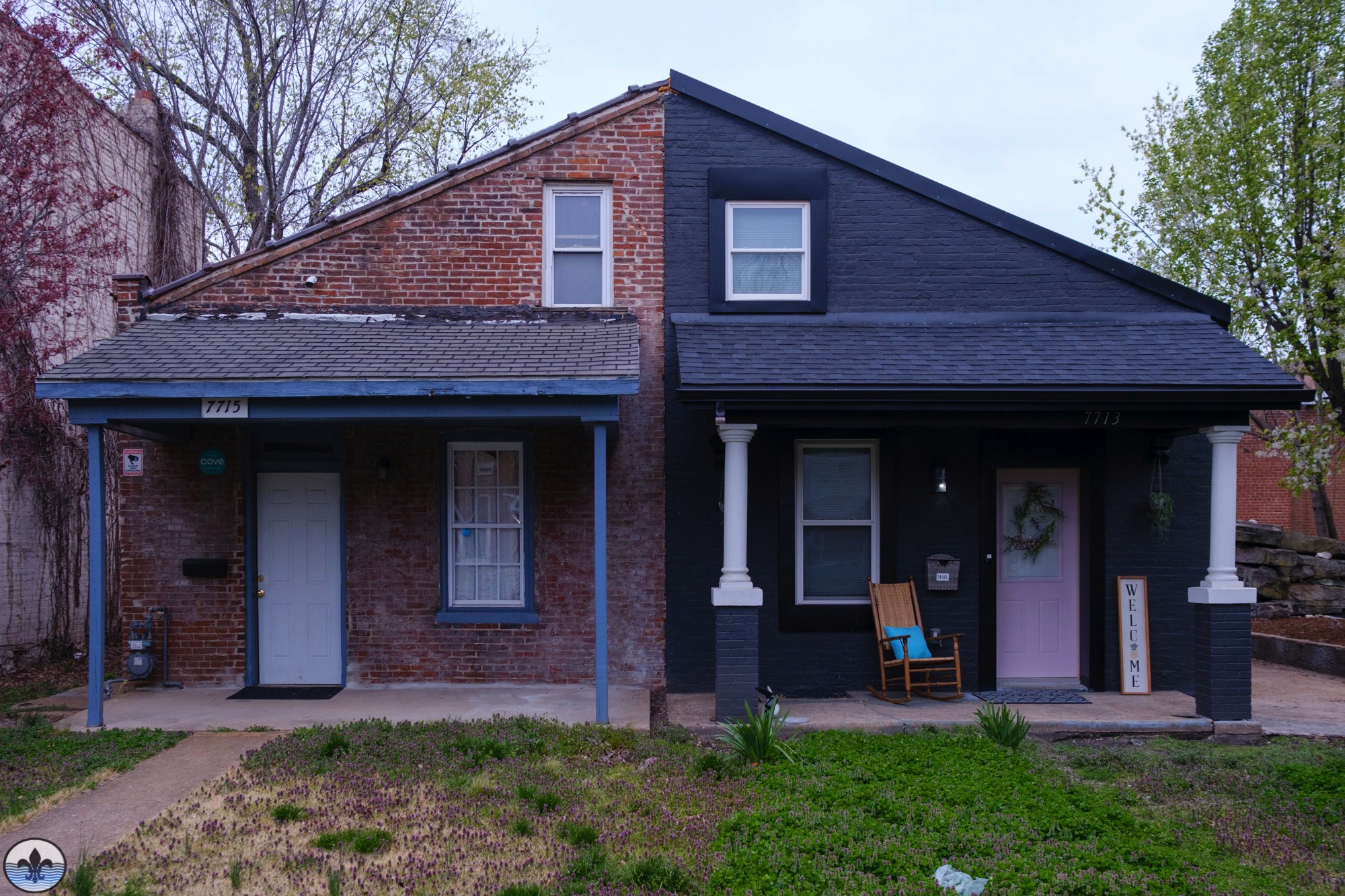
photo by Jason Gray
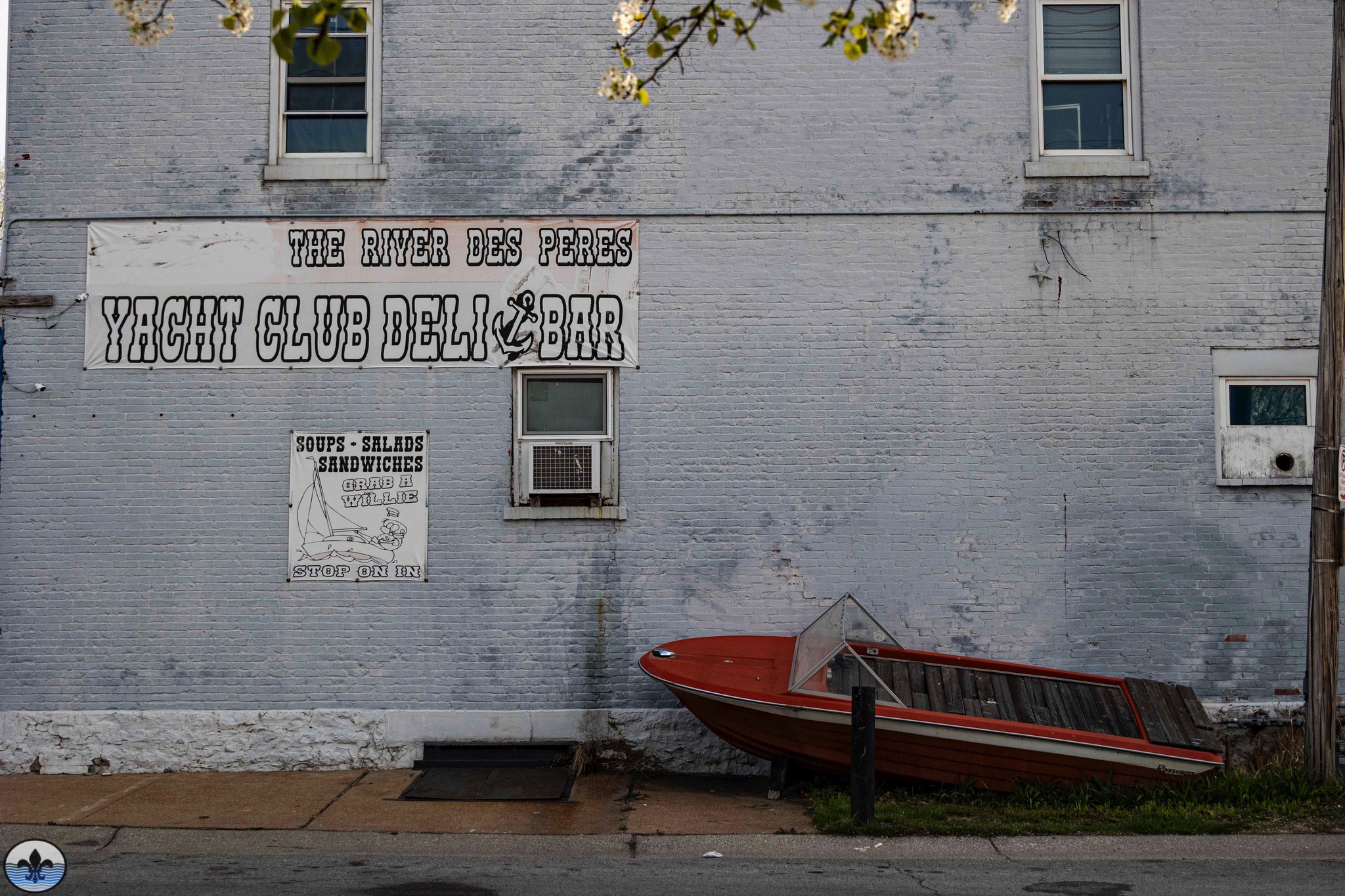
photo by Joe Rakers
Until about 1850, French culture and language dominated Carondelet (and The Patch). After this time, German immigrants began to settle in the area in large numbers (some built the stone houses still standing in the area–among the oldest residences anywhere in the city), and their impact on the local economy was substantial. The Civil War brought major manufacturing to the small city. James Eads’ design for ironclad ships won a commission from the United States Government, and these vessels were constructed and assembled in Carondelet at its Carondelet Marine Railway and Dock Company (known as the Union Iron-Works when under lease by Eads) near the base of Marceau Street. Eads’ first ironclad vessel (and the first in the United States), the USS Carondelet, was put into service in 1861. Ironclad and plated ships constructed in Carondelet were instrumental in keeping the Mississippi River free from Confederate control. Of the two dozen, ironclad ships in service during the war, nearly half were constructed at Eads’ facility. Though the Carondelet Marine Railway and Dock Company, which used a unique short-line rail and slide system to pull and return barges and other vessels from the river for maintenance, continued to do business under various names until 2001, ship-building was never so significant as it was during the Civil War.
In fact, it was an extension of a rail line constructed in 1855 that brought the most sustained growth to the city. The Iron Mountain and Southern Line extended its service through Carondelet, which became an important stop between the quarries of central Missouri and St. Louis. This line provided the Vulcan Iron Works site with iron ore for smelting and generated big business until other sources of iron ore overtook the Missouri supply. Iron Mountain line was absorbed by the Missouri-Pacific (now United-Pacific) Railroad but continued to service heavy industry in the area. Over time, Vulcan Iron Works was replaced by the Laclede Gas and Light Company, who introduced coke production to the facility. The Laclede Gas and Light Company plant was eventually sold to Great Lakes Carbon Company and finally to the Carondelet Coke Corporation, which operated the site until it closed in 1987.
Despite all of this prosperity, the storied community known as Carondelet was annexed to the City of St. Louis in 1870 by an act of State Legislature. It is under this umbrella that The Patch neighborhood came to exist.
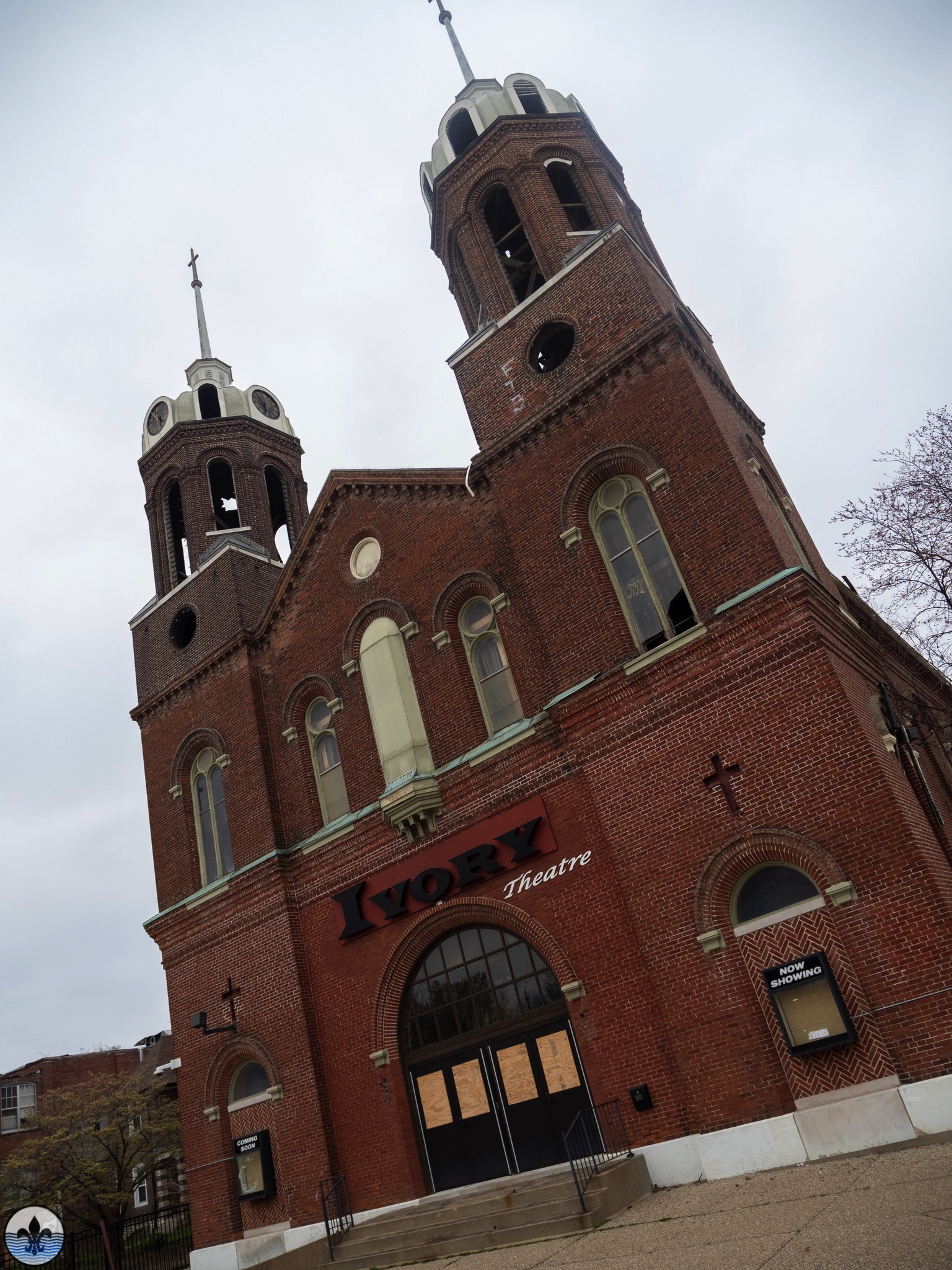
photo by Dennis Daugherty
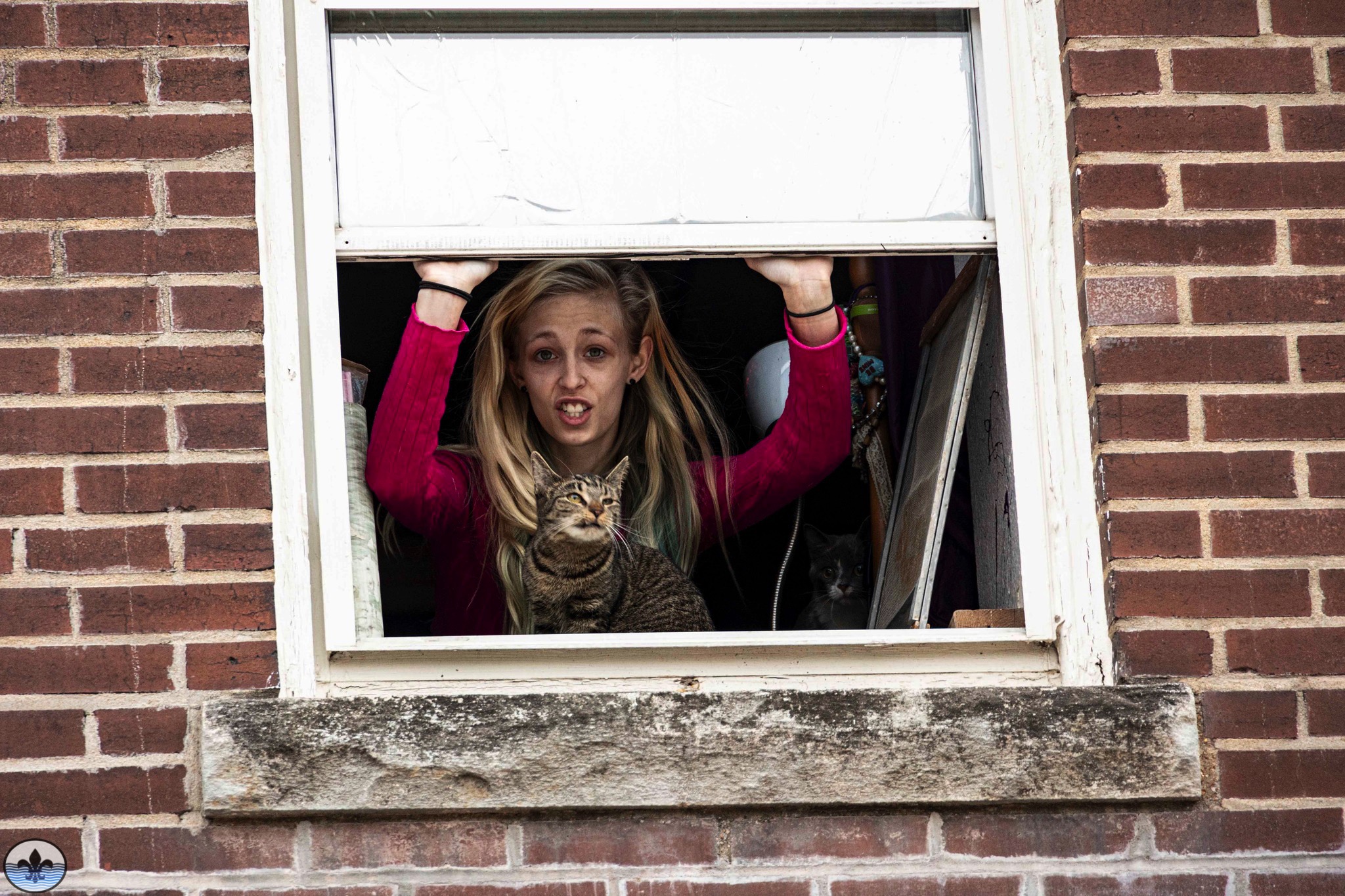
photo by Joe Rakers
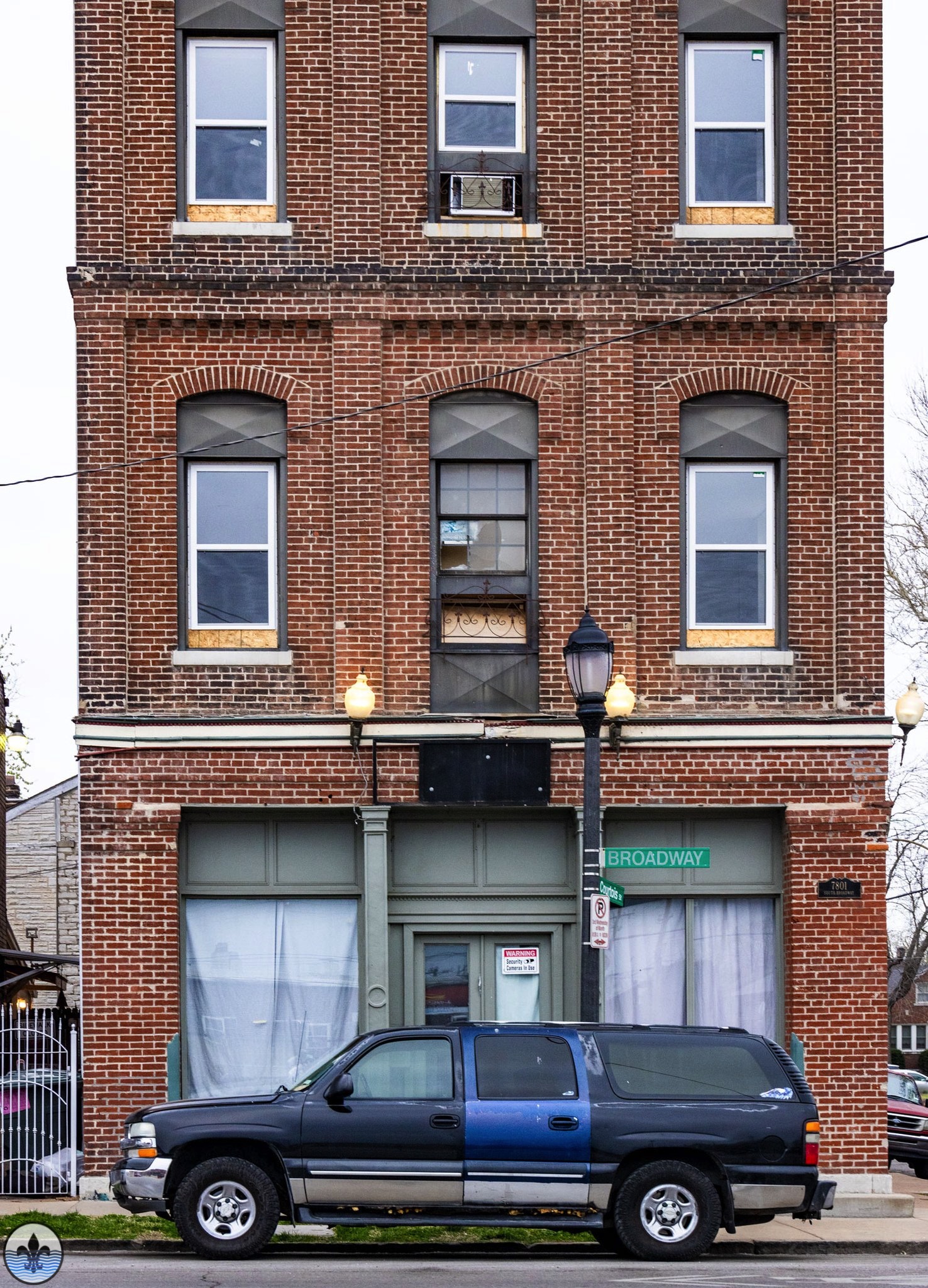
photo by Diana Linsley
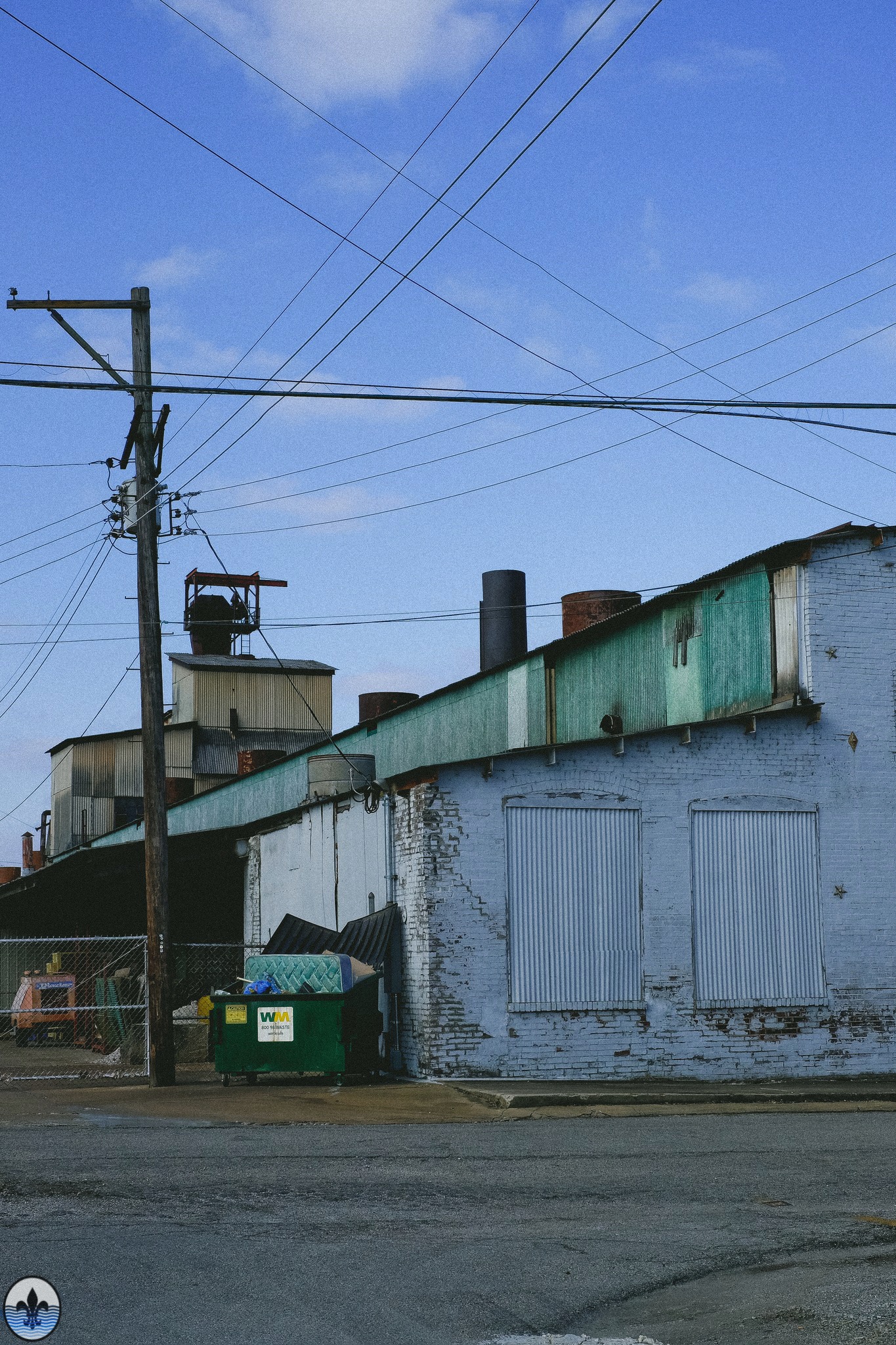
photo by James Palmour
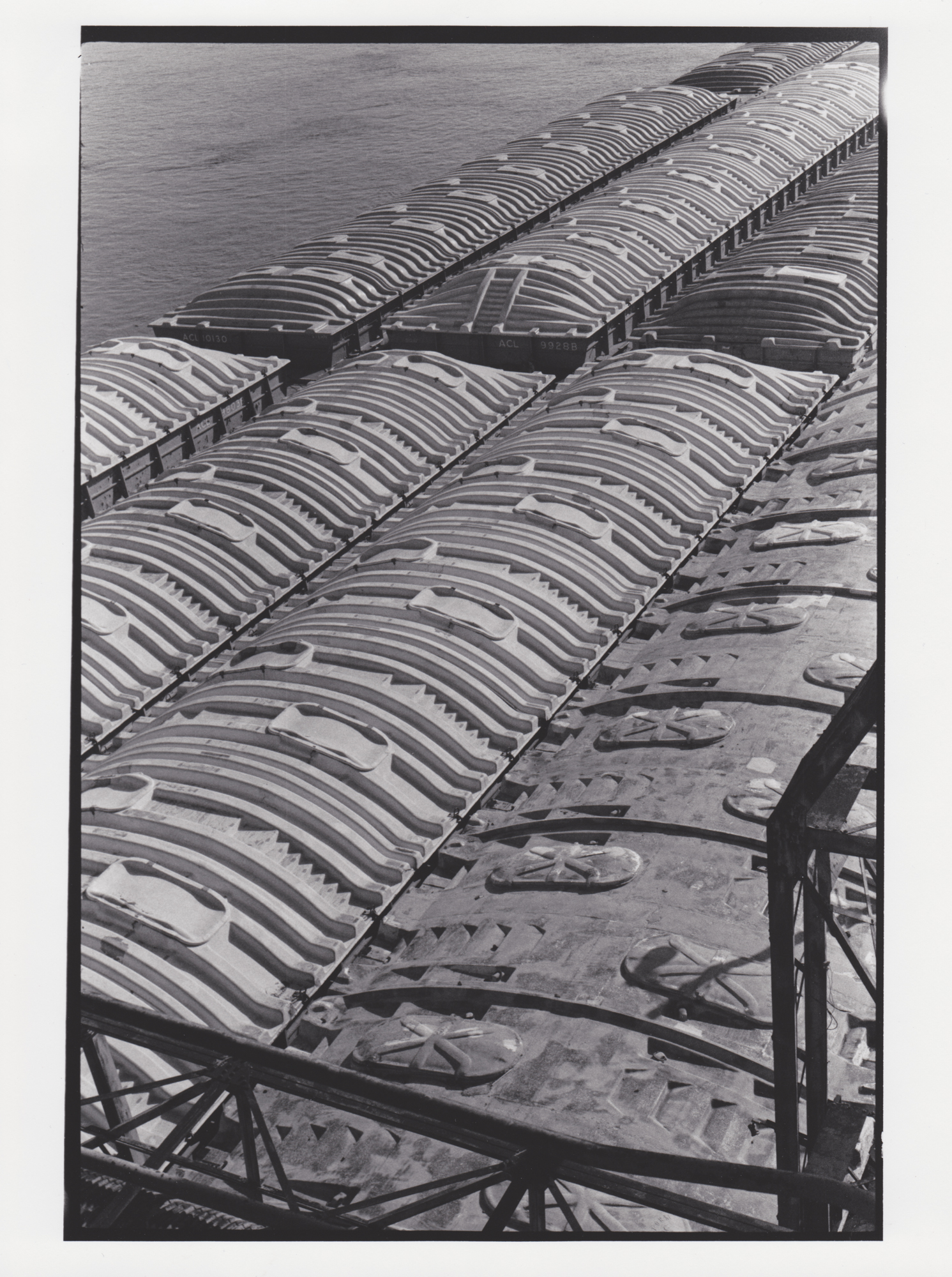
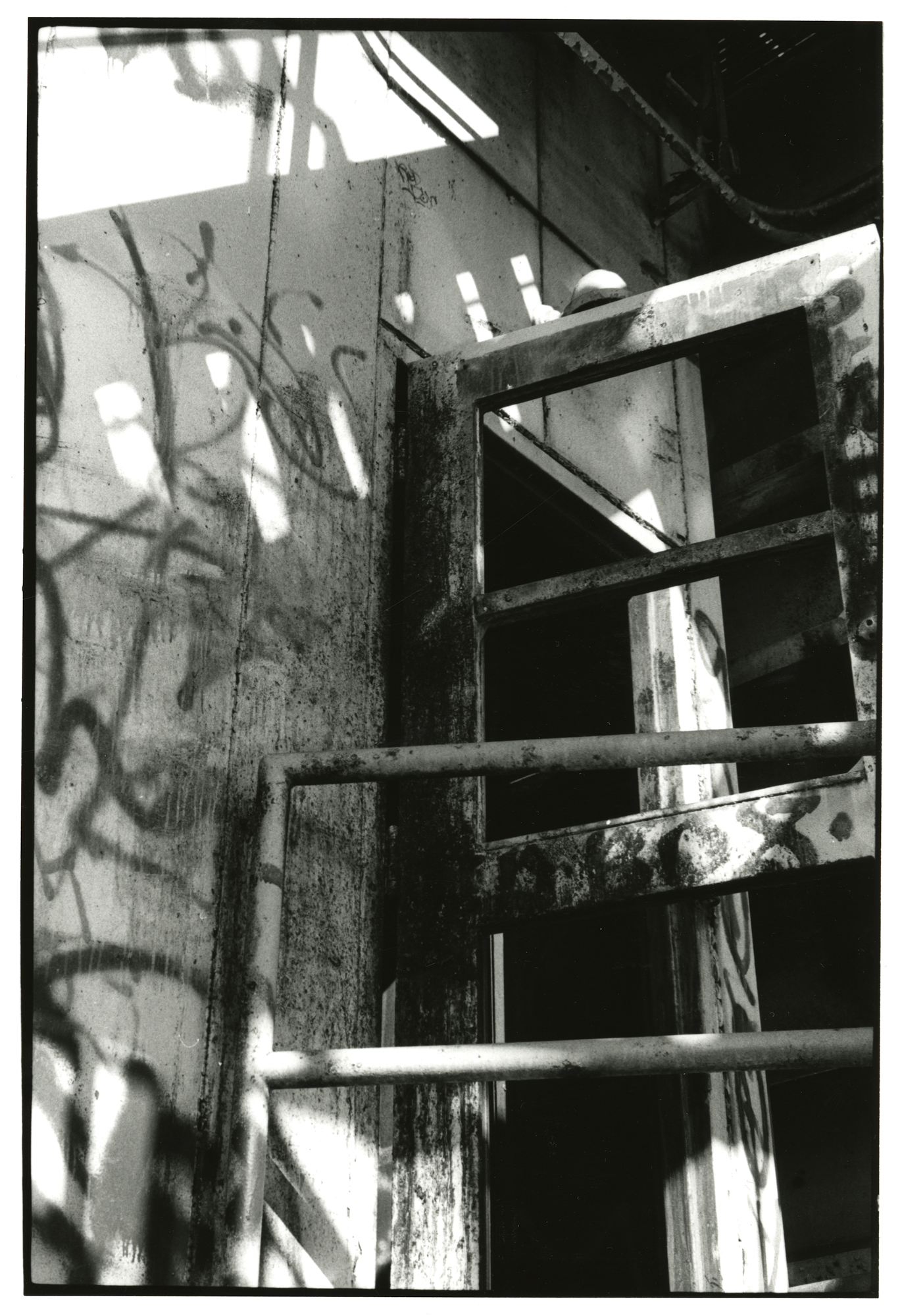
(left) View of barges from loading crane platform; (right) Loading crane control room door; photos by Jason Gray
The closure of the Carondelet Coke Corporation in 1987 was no accident. Coke, a product used in the production of steel and produced by the destructive distillation of coal, was designated as a major carcinogen, particularly toward the development of lung cancer, through a cohort study of 59,000 steel workers and summarized by the International Agency for Research on Cancer (first in 1984 and then subsequently updated). The Environmental Protection Agency in 1987, following studies of their own on the impact of coke production both to workers and nearby residents, issued a set of emissions standards that shuttered many coke plants across the United States. For nearly 20 years, the former Carondelet Coke Plant sat vacant and crumbling, with sections of its novel, barge-loading crane (shown above) falling into the river. In 2006, the site was designated as an EPA Superfund Site, and a $13 million plan to demolish and cleanup the site was begun. Following years of remediation, the former Carondelet Coke site saw its first new construction break ground in 2015. Once completed, the River City Business Park will encompass 725,000 square feet of light industrial, warehousing, distribution and flex-use space in its five separate buildings. It is a futuristic vision for a site steeped in so much history.
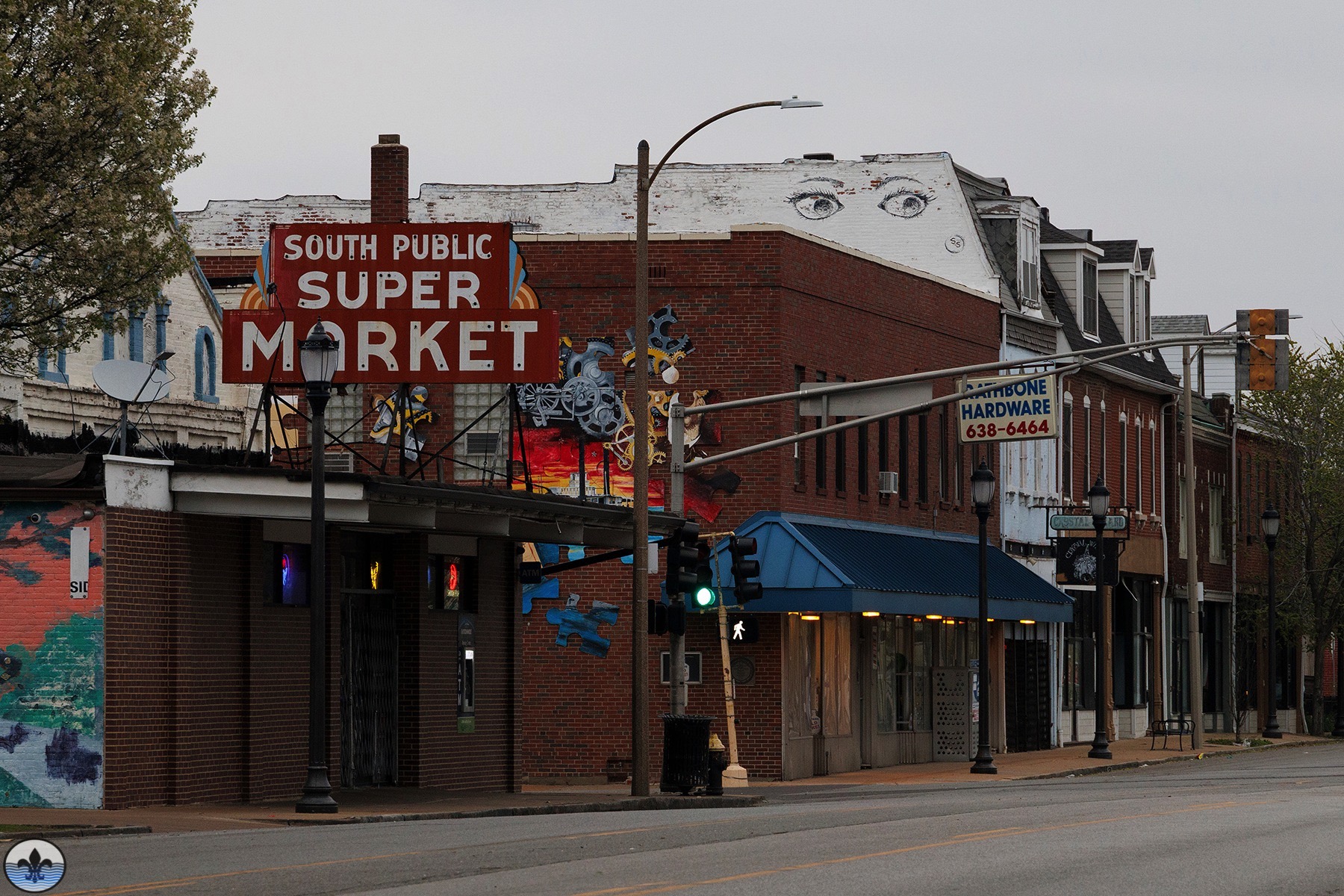
photo by Sue Rakers
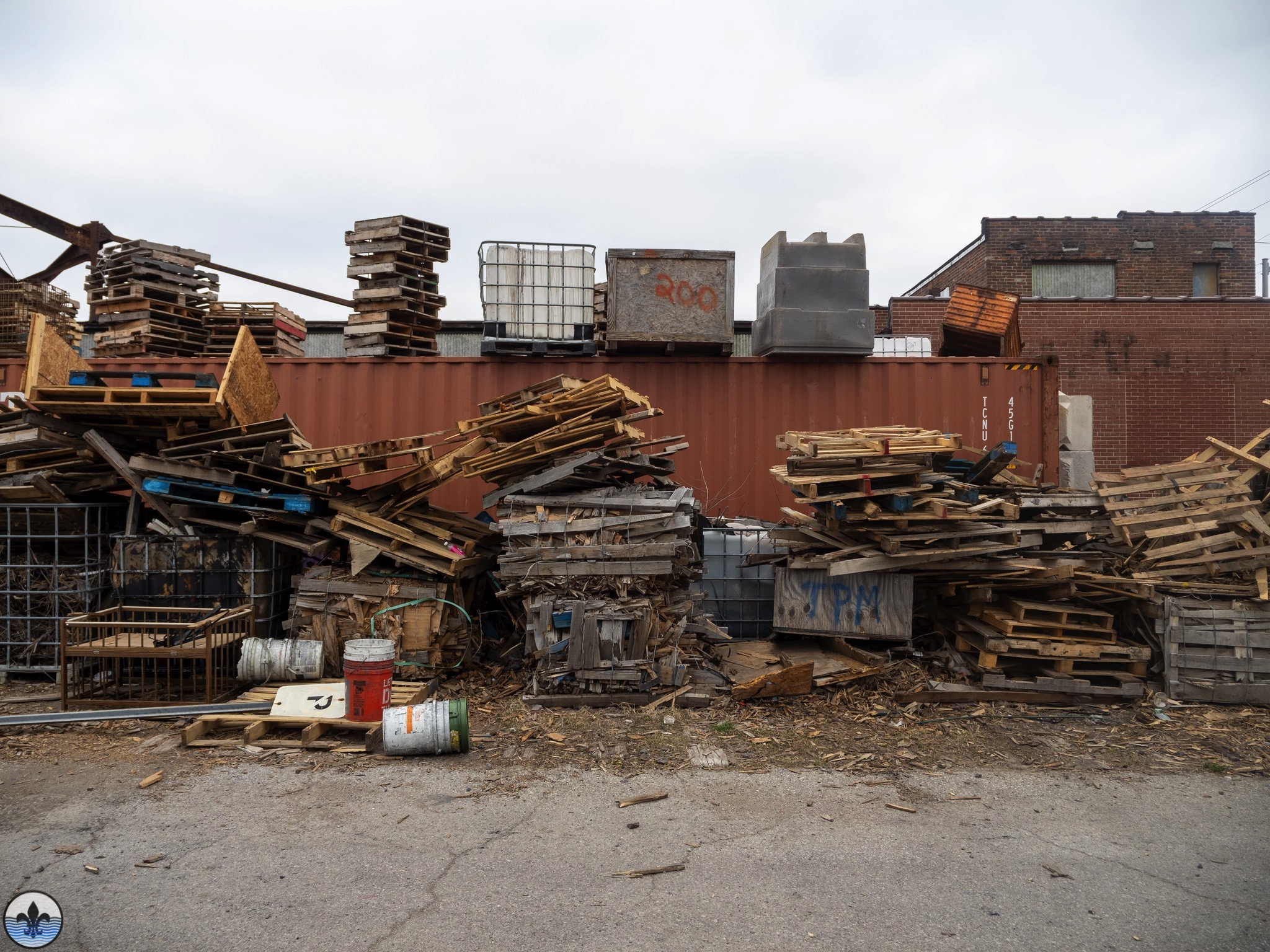
photo by Dennis Daugherty
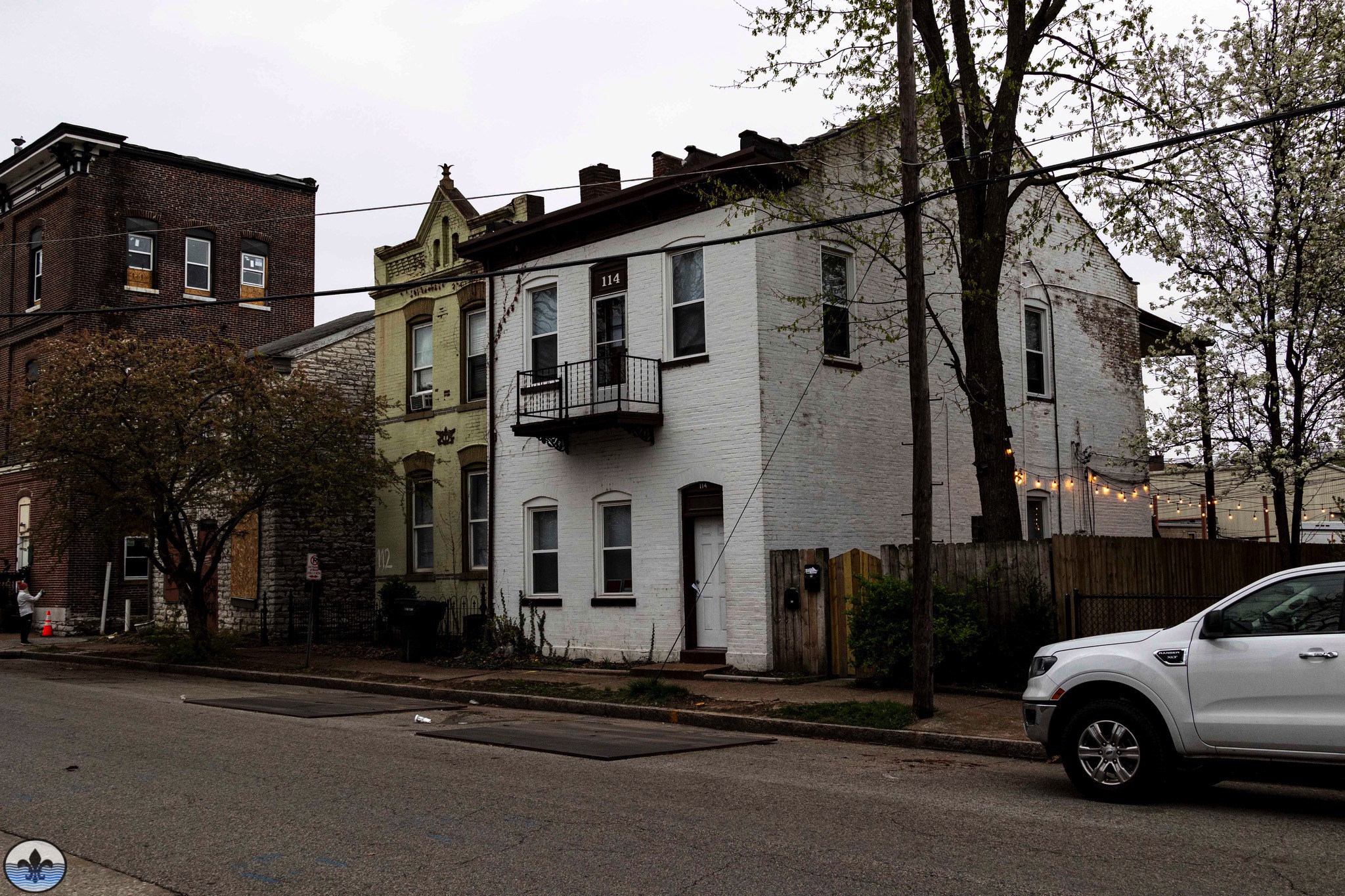
photo by Sue Rakers
Today, The Patch is one of St. Louis’ quirkiest neighborhoods, and one that this article just begins to unveil. It is a firmly working class community, extending from its earliest history to the present. The area that once housed so much industrial might still groans with industry (now mostly selvage and milling operations). Stretching westward, the residential areas, dotted with small homes up to mid-sized mansions from St. Louis’ earliest days to its era of prominence, echo with with the daily machinations of families come and gone and come again. Micro-neighborhoods, like that of the Ivory Triangle near the former St. Boniface Church, sprout and offer pockets of revitalization. And Broadway Avenue, the central artery for The Patch connecting it to both Downtown St. Louis and St. Louis County, continues to stand as one of the most promising sections of the city in terms of its potential, despite the ever-increasing list of historic buildings which fall prey to fire and/or demolition each year along its corridor. A lot has changed since our first visit in 2012, some welcome, some not-so-much, but what has not changed is our recommendation to put this neighborhood firmly on your radar.
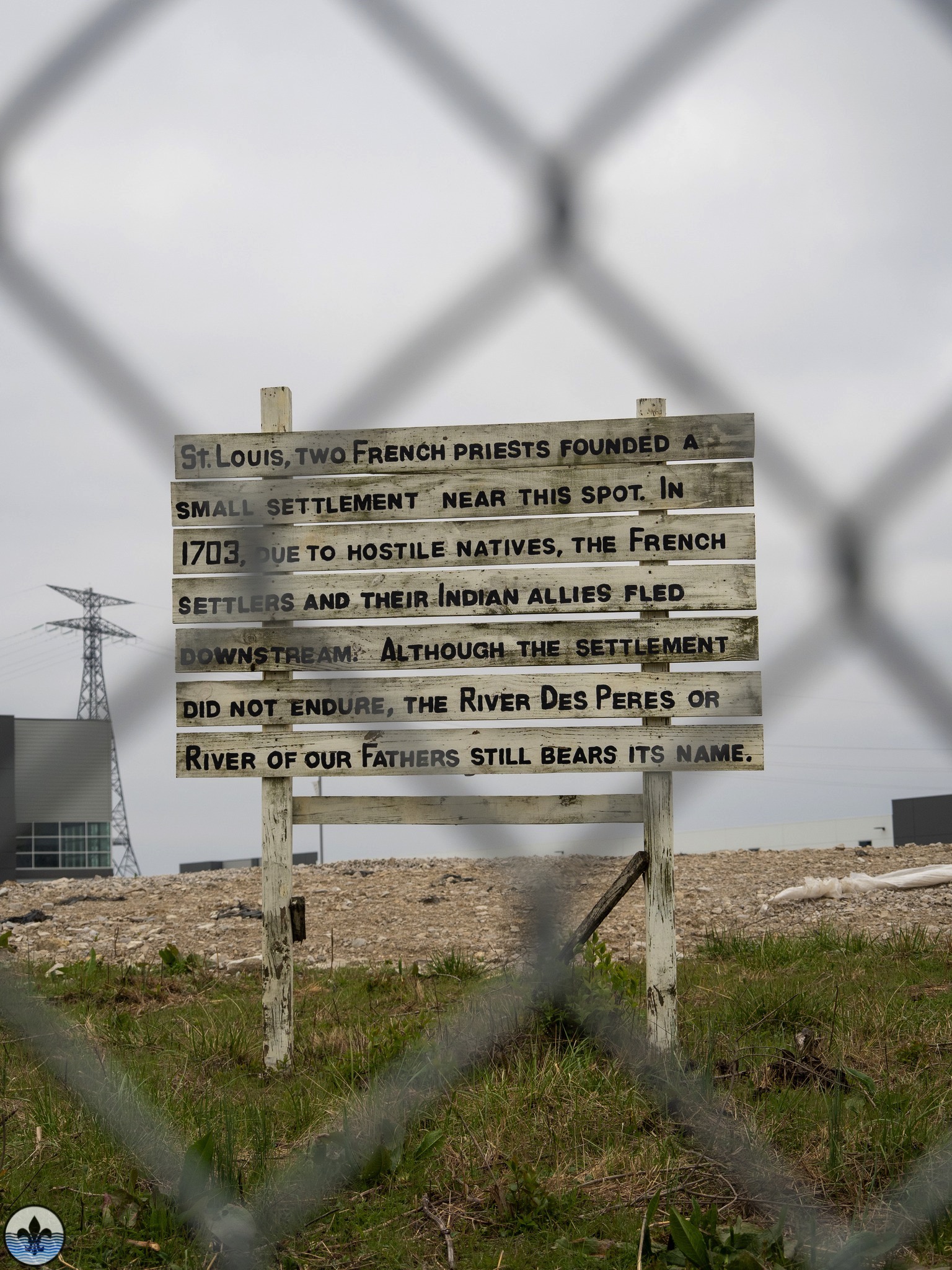
photo by Dennis Daugherty
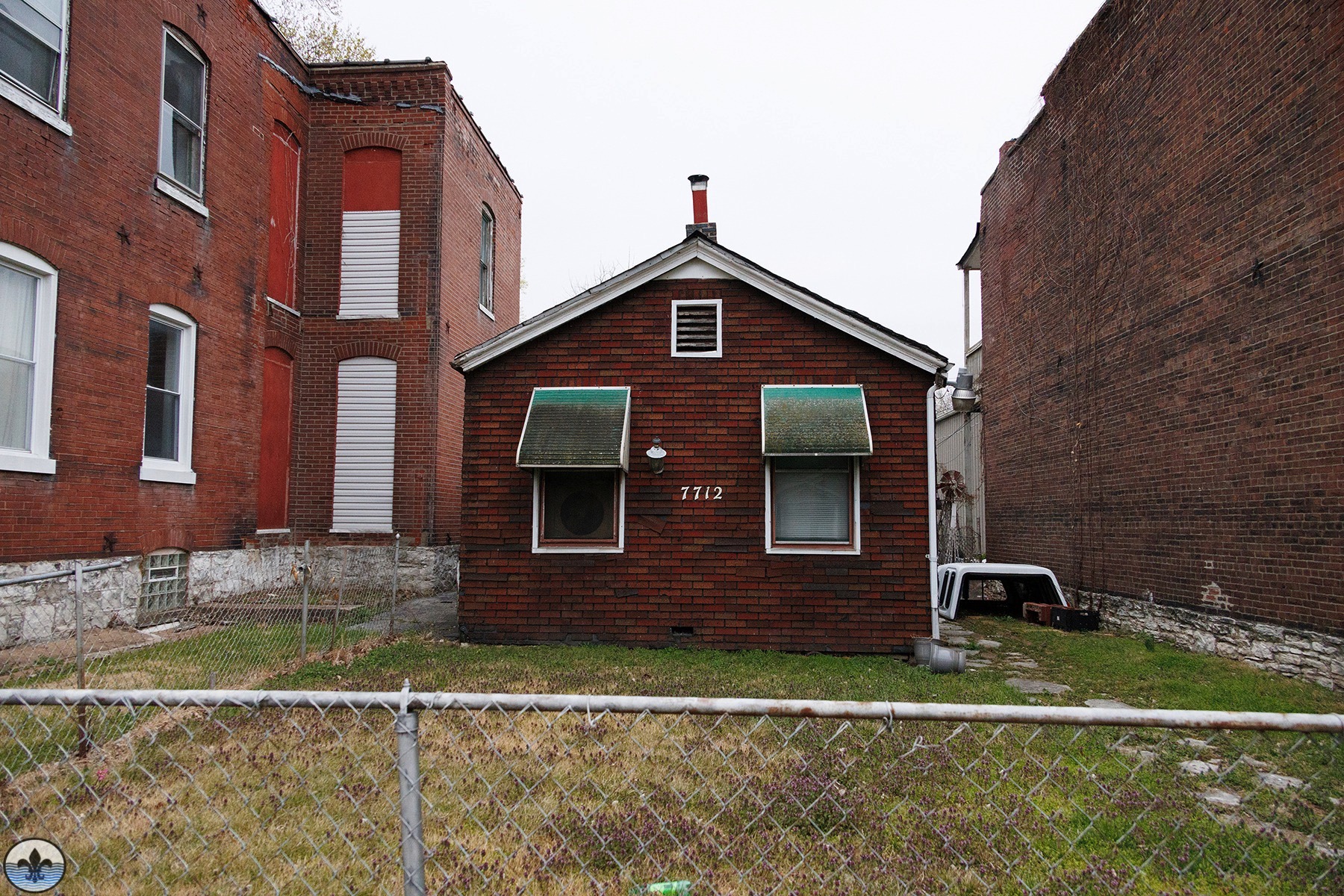
photo by Sue Rakers
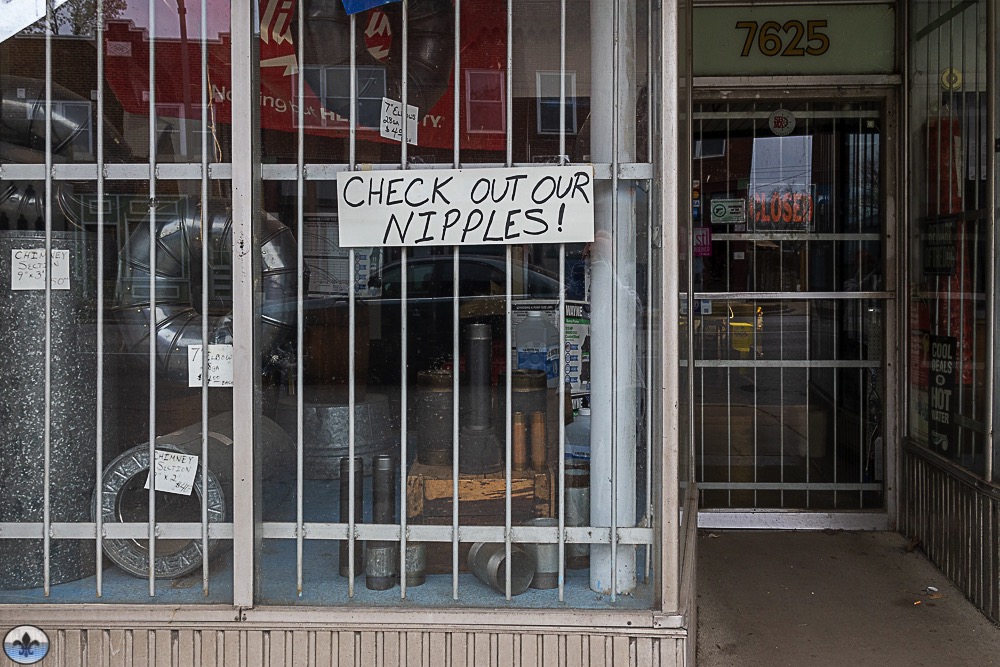
photo by Jane DiCampo
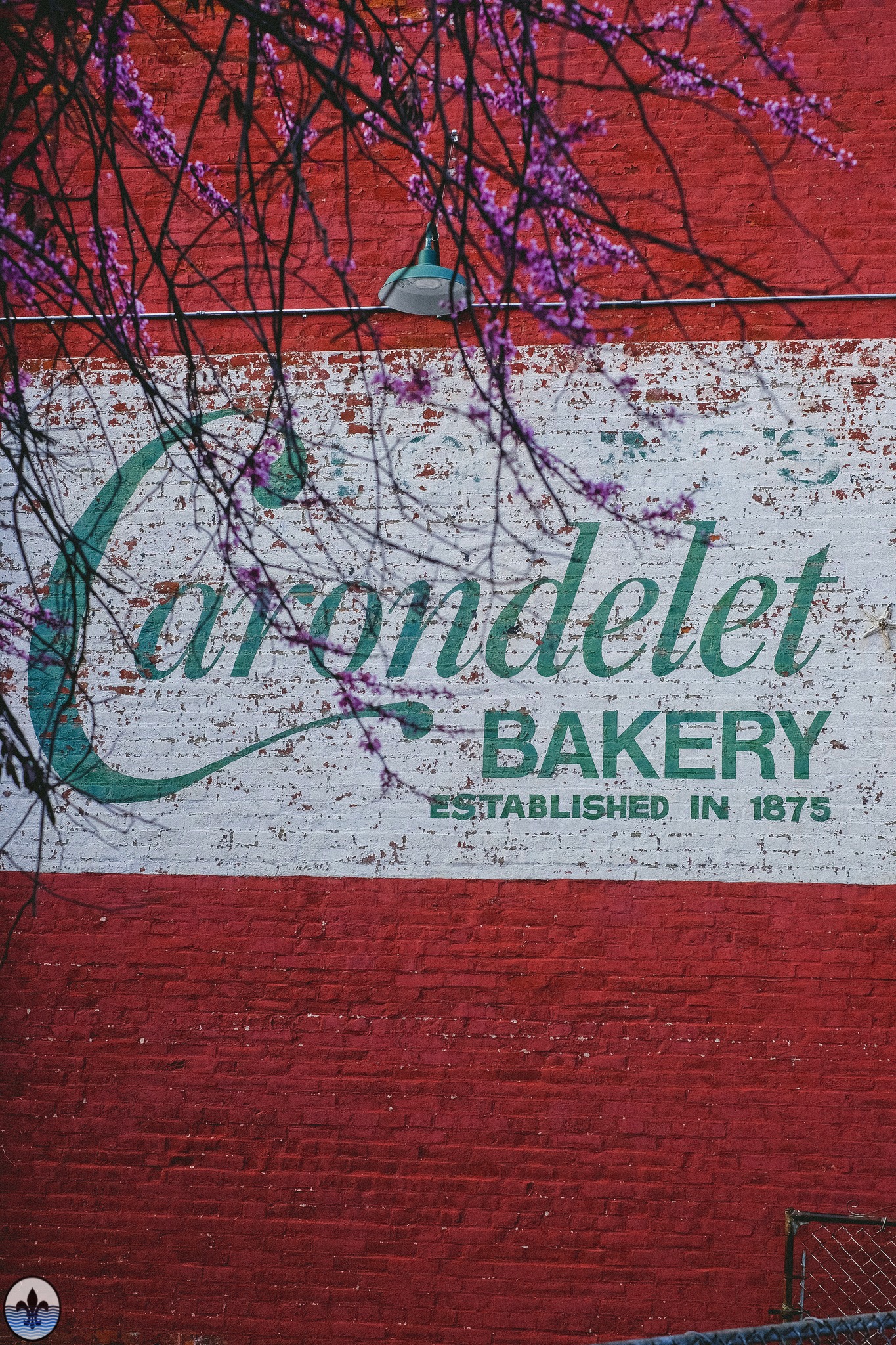
photo by James Palmour
After the Flood, some members met up at Speakeasy Cafe, which is a comfy spot to grab a cup of coffee and a bite to eat in the area (though just outside the borders of The Patch).
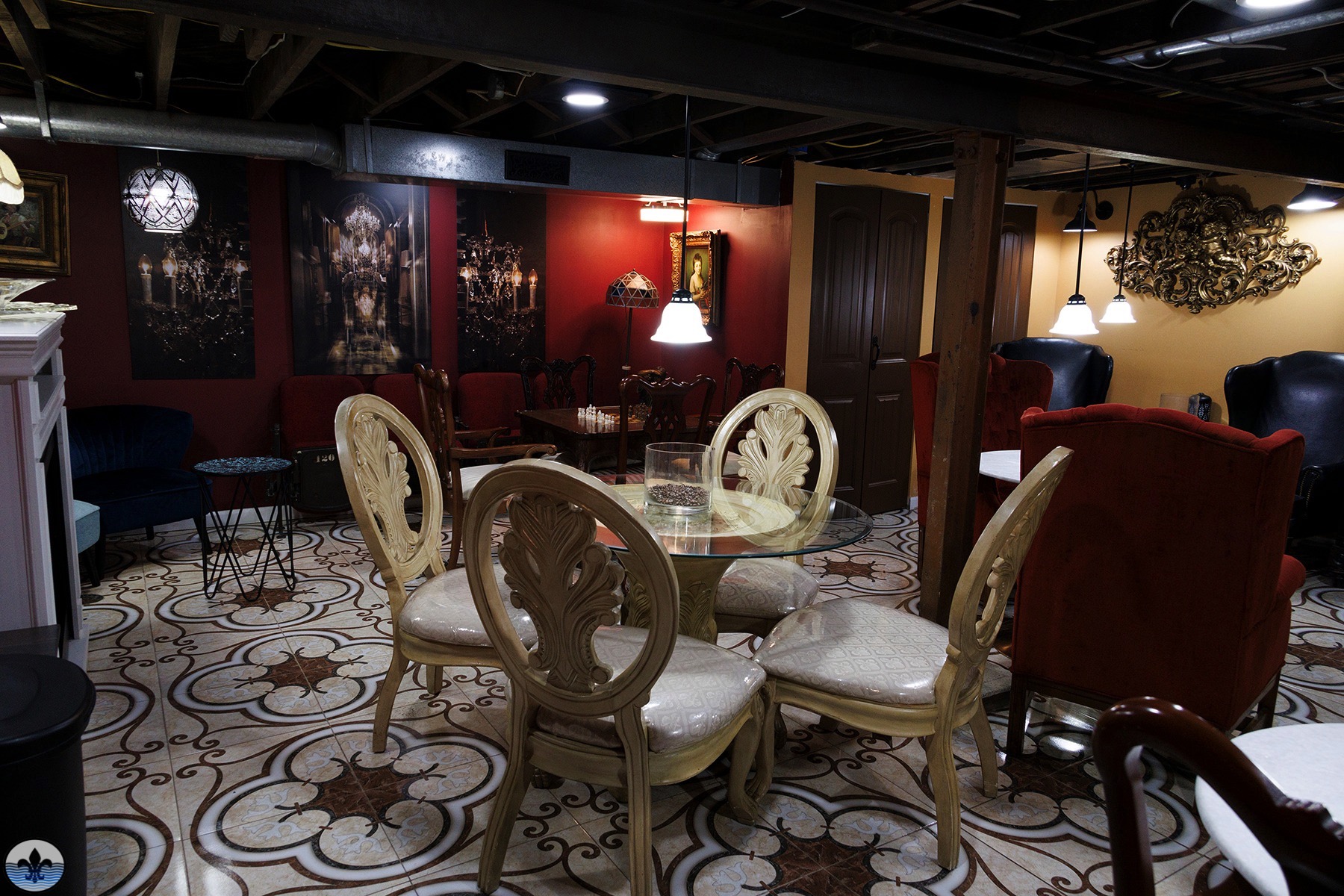
photo by Sue Rakers






